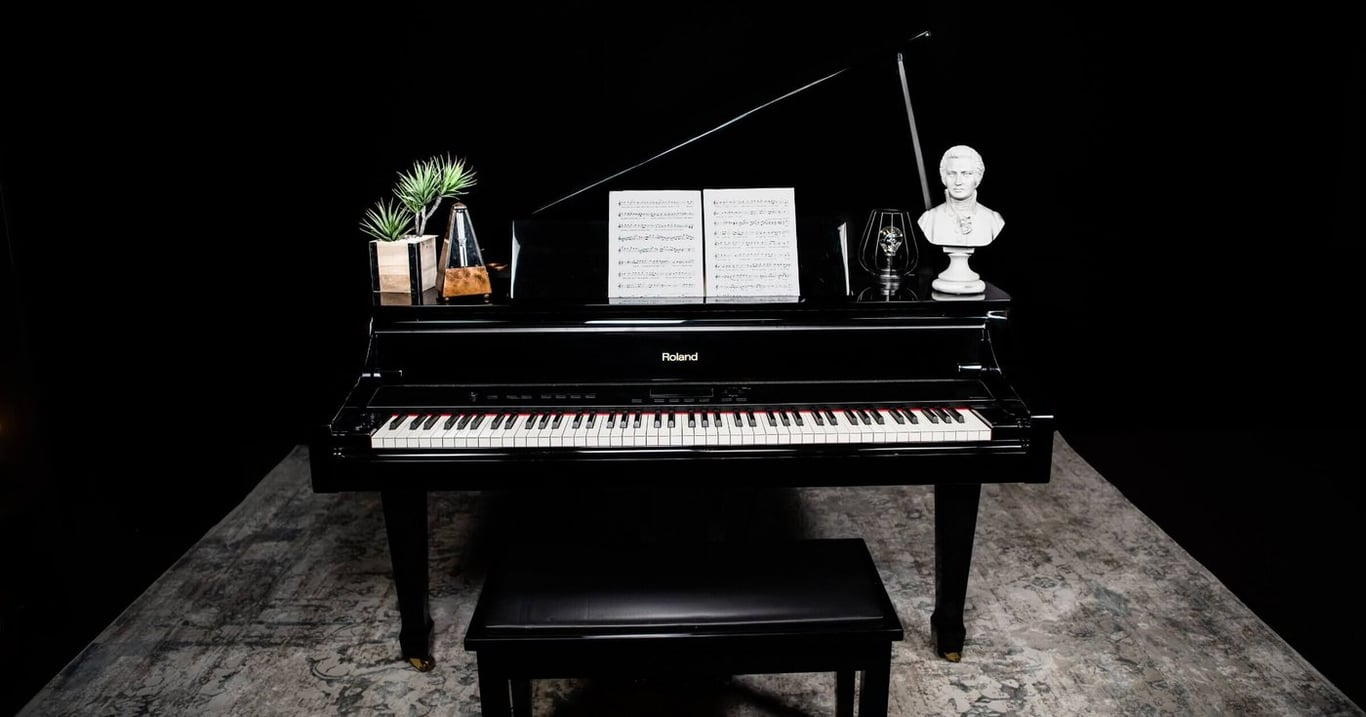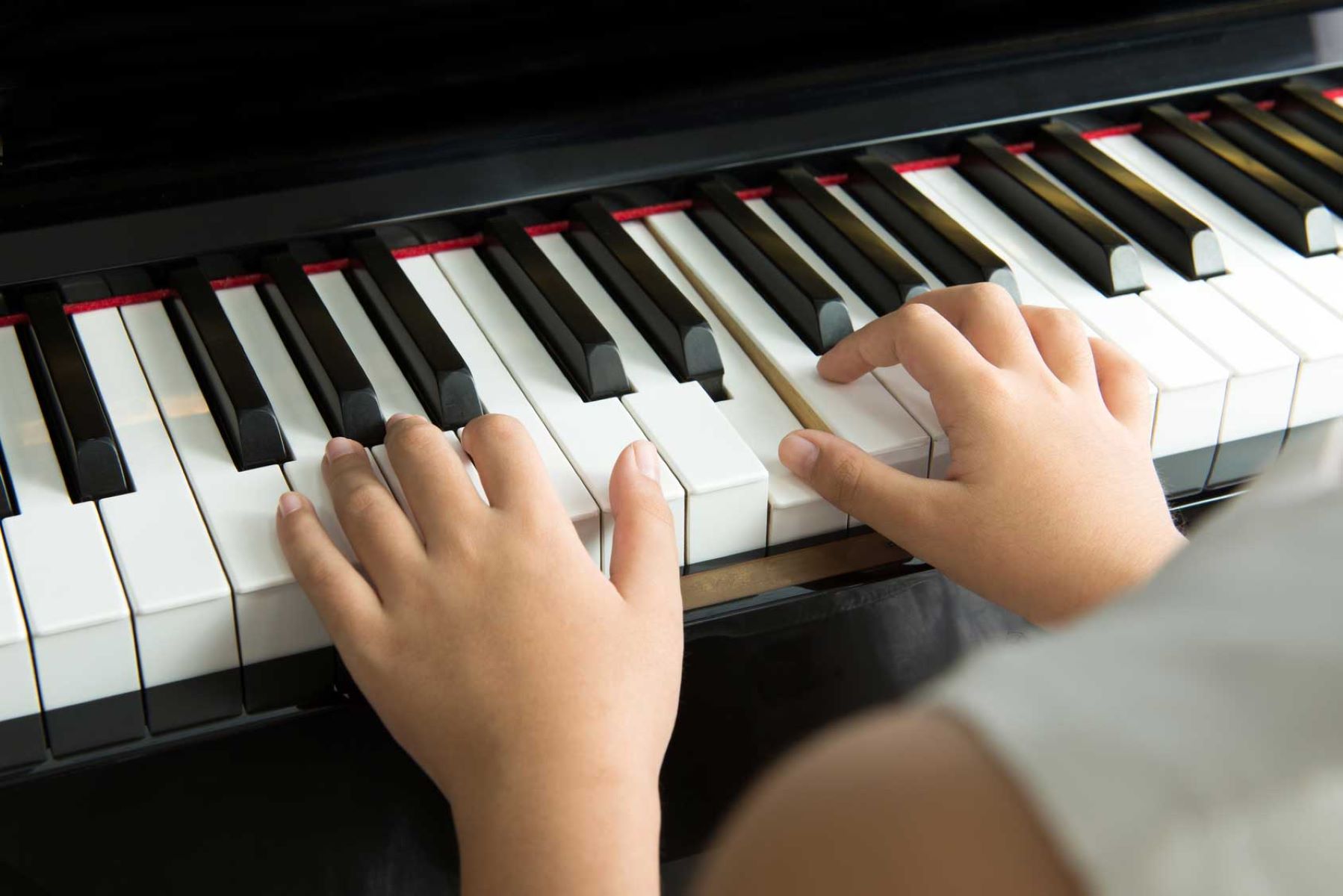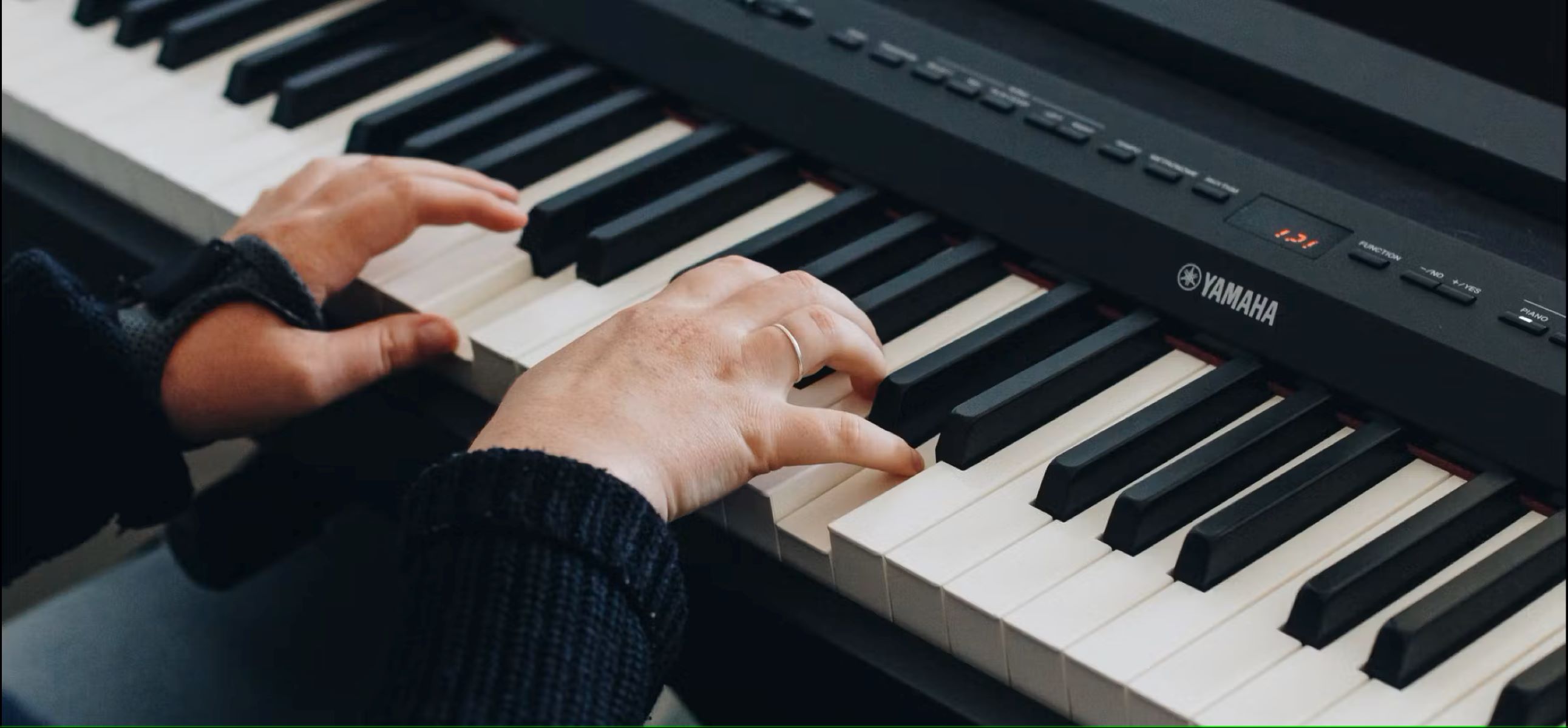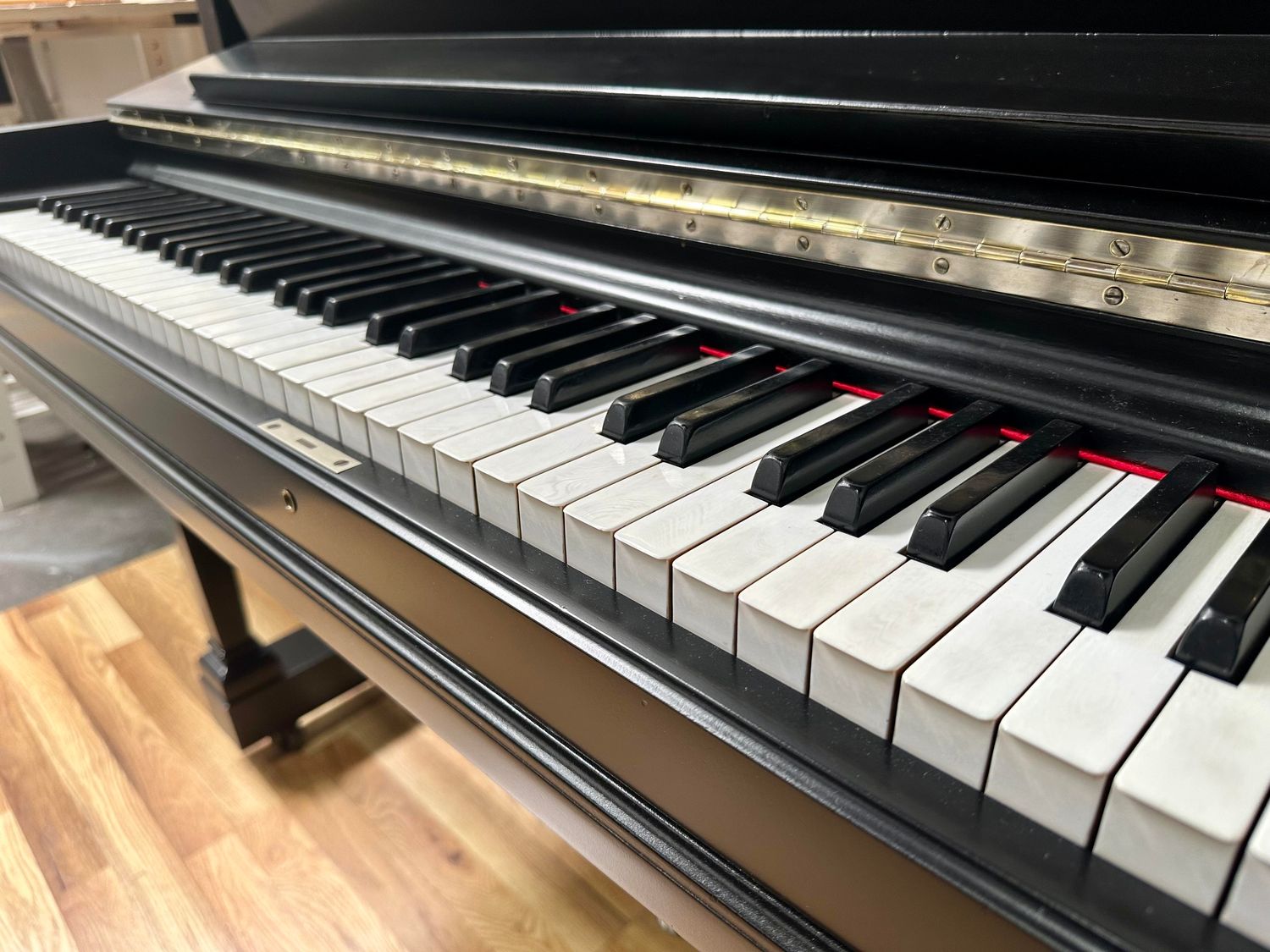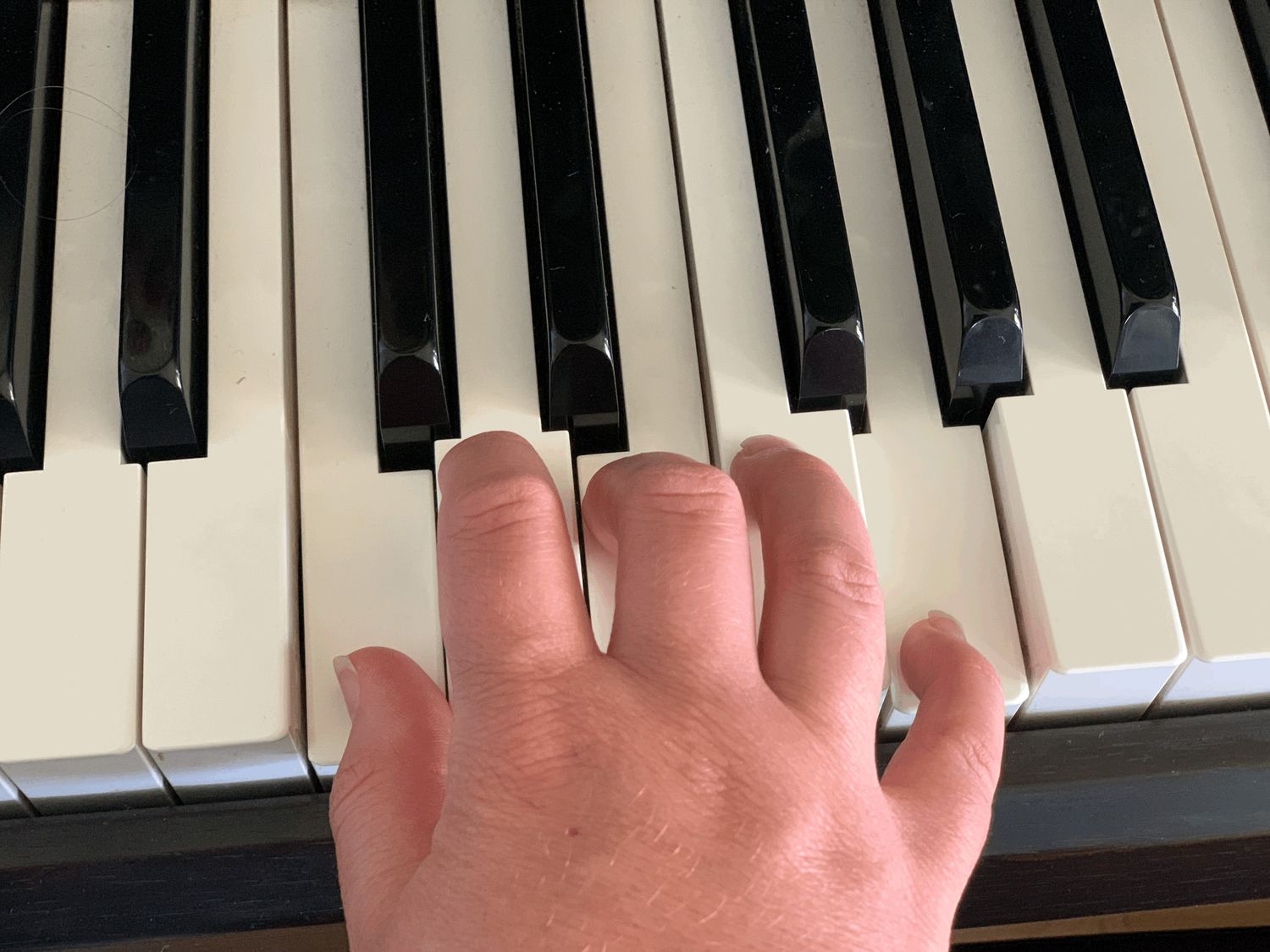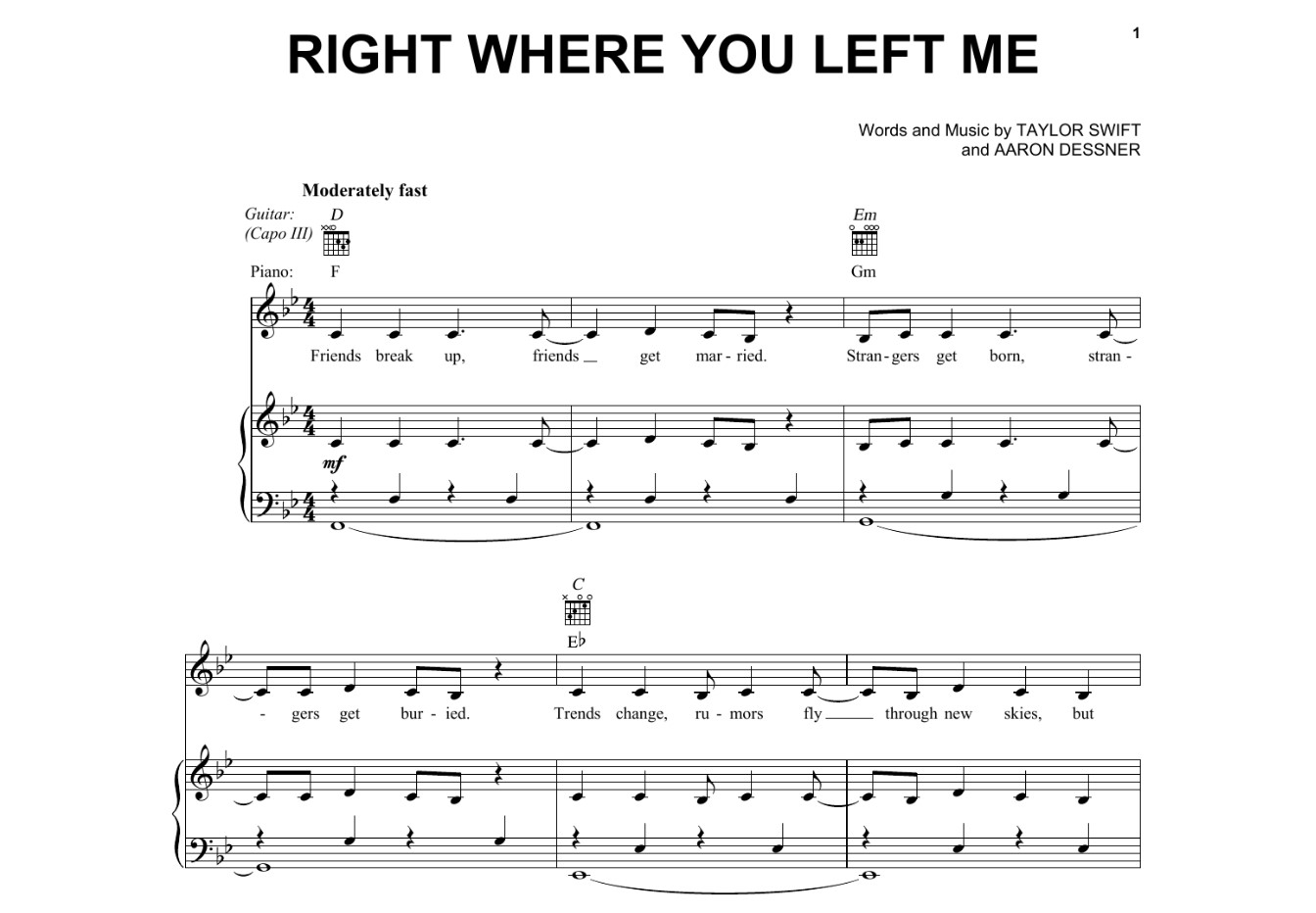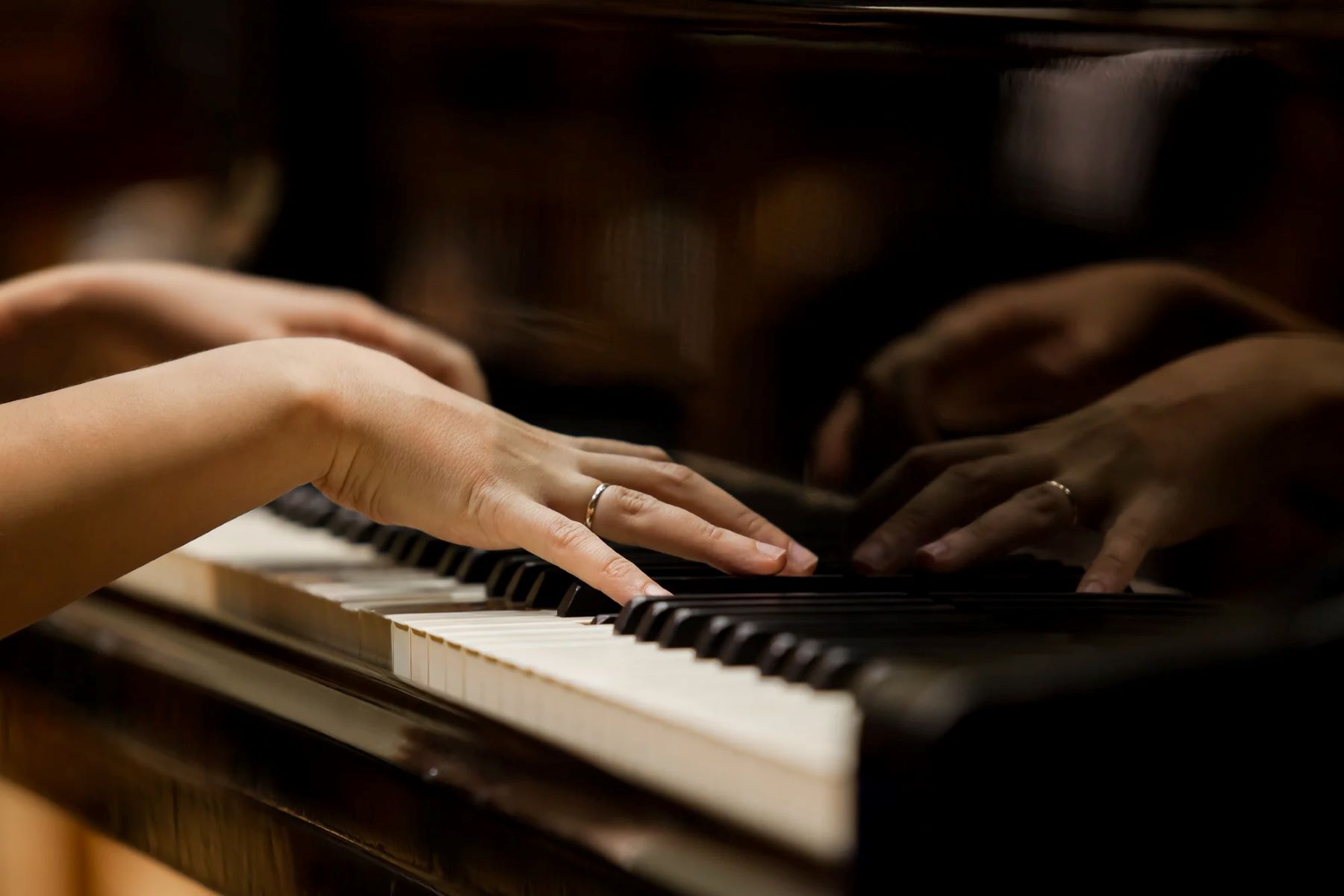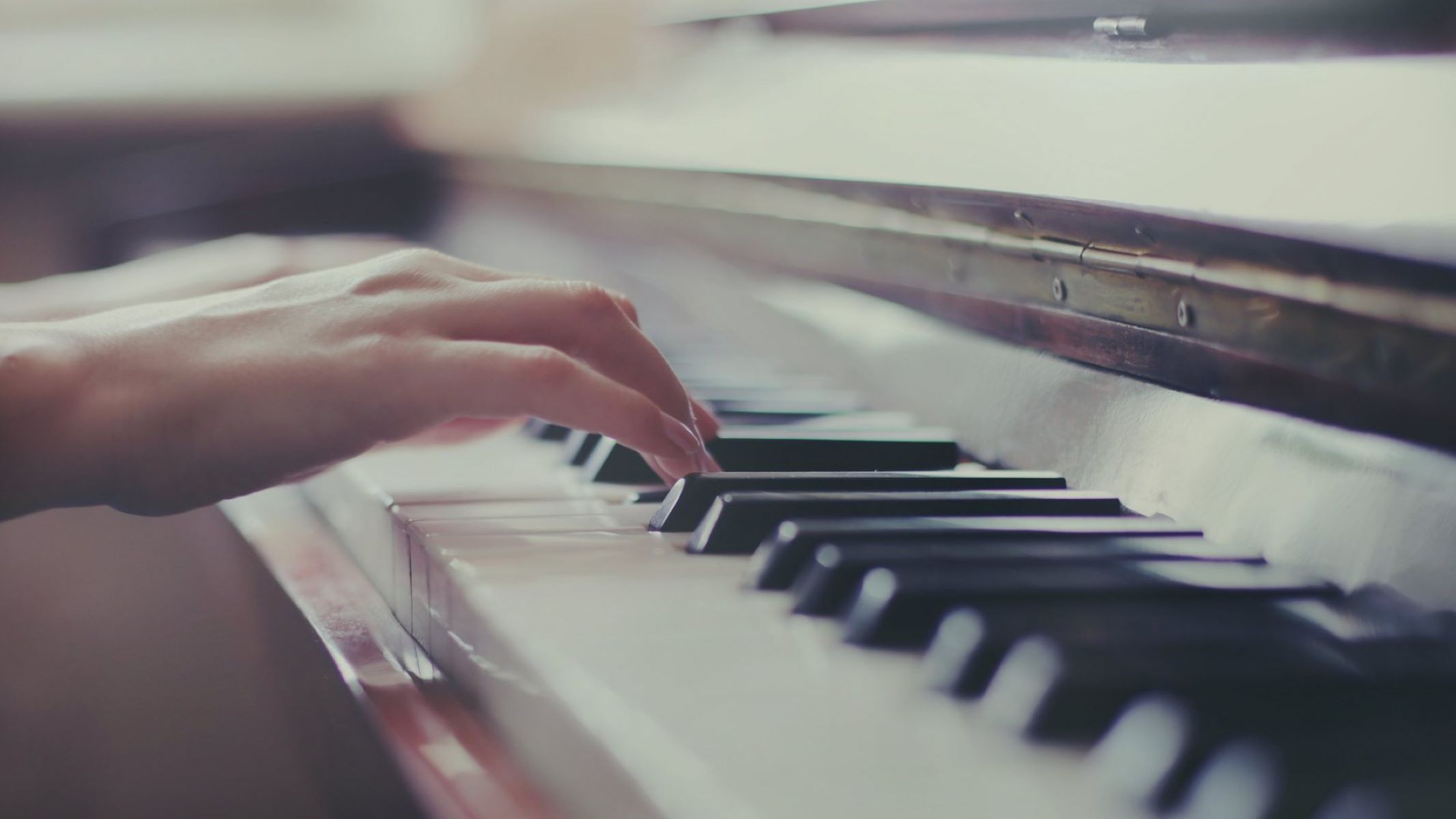Home>Instruments>Piano>How To Play Piano With The Left Hand
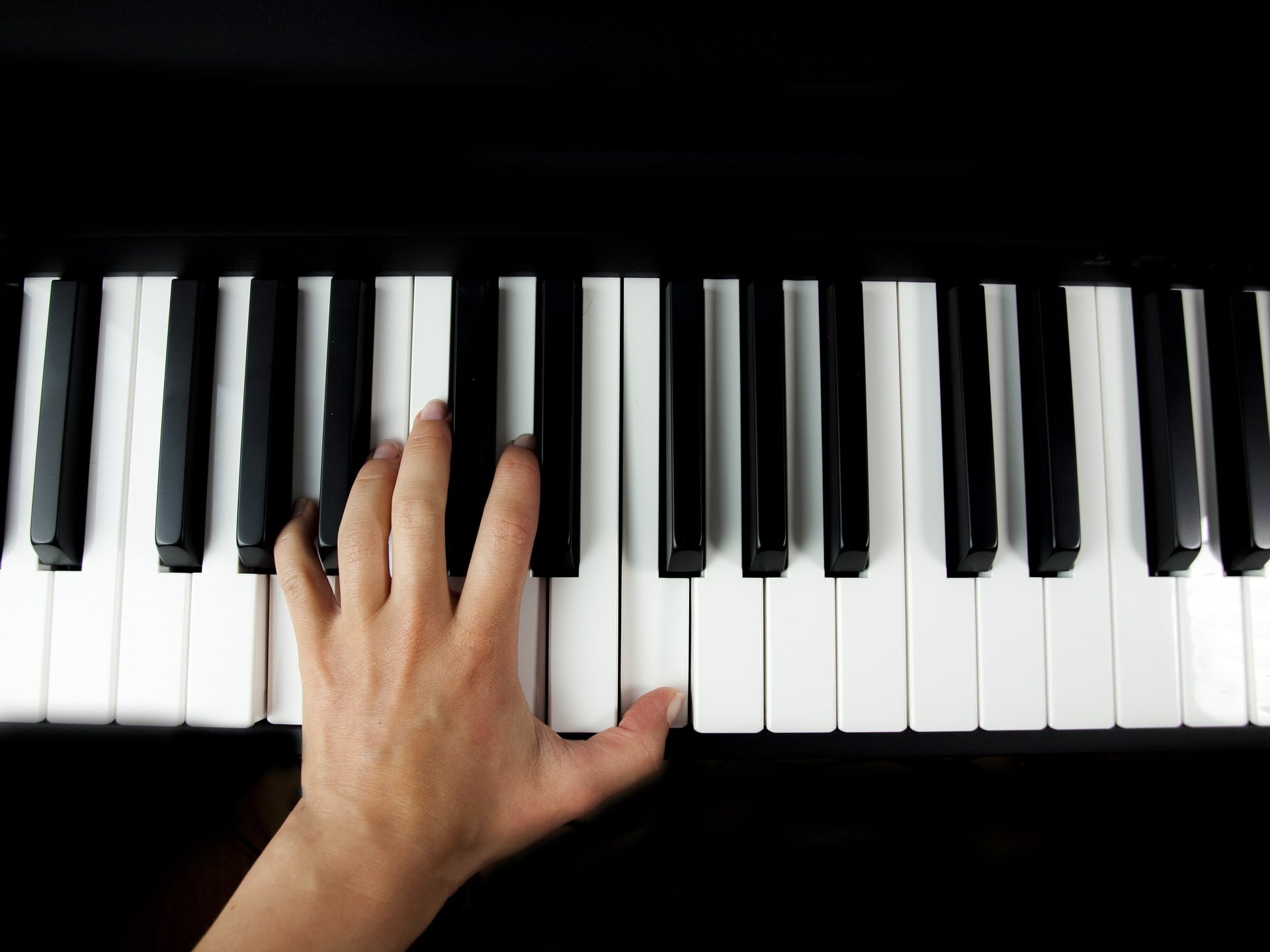

Piano
How To Play Piano With The Left Hand
Published: February 11, 2024
Learn how to play piano with your left hand and improve your piano skills. Discover effective techniques and exercises to master playing the piano.
(Many of the links in this article redirect to a specific reviewed product. Your purchase of these products through affiliate links helps to generate commission for AudioLover.com, at no extra cost. Learn more)
Table of Contents
Introduction
Playing the piano is a delightful and rewarding pursuit that offers a myriad of benefits, from enhancing cognitive abilities to providing a creative outlet. While many beginners focus primarily on their right hand due to its prominence in melody and harmony, the left hand plays an equally crucial role in establishing a solid foundation for musical expression. In this article, we will explore the art of playing the piano with the left hand, delving into techniques, exercises, and repertoire to help pianists elevate their left-hand proficiency.
Mastering the left hand opens up a world of musical possibilities, enabling pianists to create rich, resonant textures and intricate harmonies. Whether you're a novice seeking to strengthen your left-hand skills or an experienced player aiming to refine your technique, this guide will provide valuable insights and practical tips to elevate your piano playing.
While the left hand often takes on a supportive role in traditional piano pieces, it possesses the power to infuse compositions with depth and complexity. From basslines that underpin the rhythmic structure to intricate chord progressions that add nuance to the melody, the left hand is a cornerstone of piano music. By honing your left-hand technique, you can unlock the full expressive potential of the piano and expand your repertoire with pieces that showcase the beauty and versatility of the instrument.
Throughout this article, we will explore the nuances of left-hand technique, delve into exercises for developing left-hand independence, and discuss strategies for mastering left-hand repertoire. Whether you aspire to perform classical masterpieces, jazz standards, or contemporary compositions, cultivating a strong and agile left hand is essential for realizing your musical aspirations.
Join us on this enriching journey as we uncover the intricacies of playing the piano with the left hand, offering guidance and inspiration to help you embark on a fulfilling and harmonious musical odyssey.
Understanding Left Hand Technique
Developing proficiency in playing the piano with the left hand requires a comprehensive understanding of the unique role it plays in shaping the musical landscape. While the right hand often takes the lead in delivering melodies and intricate passages, the left hand serves as the anchor, providing harmonic support, basslines, and rhythmic foundation. To harness the full potential of the left hand, it is crucial to grasp the fundamental techniques that underpin its expressive capabilities.
Positioning and Posture: Proper positioning of the left hand is essential for maximizing dexterity and control. When playing with the left hand, maintain a relaxed and natural posture, ensuring that your wrist remains supple and your fingers are poised to navigate the keys with ease. Position your hand slightly to the left of the keys, allowing for fluid movement and unhindered access to the lower registers of the piano.
Chord Voicings and Arpeggios: The left hand is adept at crafting lush chord voicings and arpeggios that enrich the harmonic tapestry of a musical piece. By familiarizing yourself with various chord inversions and arpeggio patterns, you can imbue your playing with depth and sophistication. Practice transitioning smoothly between different chord shapes and arpeggio patterns to cultivate agility and precision in your left-hand technique.
Articulation and Dynamics: Paying attention to articulation and dynamics is pivotal in shaping the expressive quality of the left hand. Experiment with different touch weights and explore the nuanced art of legato, staccato, and accentuation to imbue your left-hand passages with emotive depth and clarity. By mastering the subtleties of articulation and dynamics, you can breathe life into the music and convey a rich spectrum of emotions through your left-hand performance.
Rhythmic Prowess: The left hand is instrumental in establishing rhythmic precision and groove, particularly in genres such as jazz and Latin music. Practice syncopated rhythms, ostinato patterns, and varied time signatures to fortify your left-hand rhythmic prowess. Cultivating a strong sense of rhythm and syncopation empowers the left hand to drive the musical momentum and infuse compositions with vibrant energy and vitality.
By delving into these foundational aspects of left-hand technique, you can lay a solid groundwork for elevating your piano playing to new heights. Embrace the intricacies of left-hand expression and embark on a journey of discovery as you unlock the boundless potential of this vital component of piano artistry.
Developing Left Hand Independence
Enhancing left-hand independence is a pivotal aspect of honing one’s piano skills, enabling pianists to execute intricate passages and diverse rhythmic patterns with precision and fluency. As the left hand assumes a multifaceted role in shaping the harmonic and rhythmic framework of a musical piece, cultivating independence in this domain is essential for achieving a seamless and expressive performance.
Isolating Left Hand Exercises: To cultivate left-hand independence, dedicate focused practice sessions to exercises that isolate the left hand. This may involve playing scales, arpeggios, and chord progressions exclusively with the left hand, allowing it to develop its own sense of agility and control independent of the right hand. By isolating the left hand, you can pinpoint areas that require refinement and nurture its ability to navigate the keyboard with confidence.
Polyrhythmic Patterns: Engaging in polyrhythmic exercises can significantly bolster left-hand independence, fostering the ability to execute distinct rhythmic patterns simultaneously with each hand. Practice playing contrasting rhythmic motifs with the left and right hands, gradually increasing the complexity of these patterns to challenge and refine your left-hand coordination. Polyrhythmic exercises enhance cognitive dexterity and fortify the left hand’s capacity to operate autonomously within a musical context.
Contrapuntal Studies: Delving into contrapuntal studies, such as Bach’s two-part inventions or fugues, can be immensely beneficial in nurturing left-hand independence. These compositions often feature intricate interplay between the hands, with the left hand assuming melodic and contrapuntal roles. By immersing yourself in contrapuntal repertoire, you can cultivate the ability to execute intricate melodic lines and independent voices with the left hand, fostering a heightened sense of autonomy and fluency.
Syncopated Rhythms and Offbeat Accents: Incorporating syncopated rhythms and offbeat accents into left-hand exercises and repertoire can refine the left hand’s ability to maintain rhythmic independence. Practice syncopated patterns and offbeat accents to develop a keen sense of rhythmic anticipation and precision, empowering the left hand to navigate complex rhythmic structures with finesse and assurance.
By immersing yourself in these targeted exercises and explorations, you can nurture the independence and agility of your left hand, empowering it to contribute dynamically to the musical fabric with confidence and expressiveness. Embrace the journey of developing left-hand independence, and revel in the newfound freedom and versatility it brings to your piano playing.
Practicing Left Hand Repertoire
Exploring and mastering left-hand repertoire is an enriching endeavor that amplifies the depth and versatility of a pianist’s expressive palette. While the left hand is often associated with providing foundational support and harmonic accompaniment, it possesses the capacity to shine as a soloistic voice, delivering captivating melodies, intricate countermelodies, and compelling rhythmic motifs. Engaging with dedicated left-hand repertoire not only nurtures the technical prowess of the left hand but also broadens the horizons of musical interpretation and performance.
Etudes and Studies: Delving into left-hand etudes and studies is a valuable means of refining technical proficiency and dexterity. Works such as Leopold Godowsky’s “53 Studies on Chopin’s Études” or Sergei Rachmaninoff’s “Prelude in C-sharp minor, Op. 3, No. 2” offer compelling challenges for the left hand, encompassing a diverse range of technical and expressive demands. Engaging with these pieces cultivates nuanced control, agility, and strength in the left hand, elevating its capacity to navigate intricate passages with finesse.
Transcriptions and Arrangements: Embracing transcriptions and arrangements that spotlight the left hand allows pianists to delve into a rich tapestry of musical genres and styles. From transcriptions of cello suites by J.S. Bach to arrangements of jazz standards and popular melodies, exploring diverse repertoire tailored for the left hand presents an opportunity to broaden musical horizons and infuse performances with compelling depth and diversity.
Concerti and Chamber Music: Engaging with left-hand concerti and chamber music compositions unveils the captivating world of collaborative performance and orchestral dialogue. Pieces such as Maurice Ravel’s “Piano Concerto for the Left Hand in D major” or Paul Hindemith’s “Piano Music with Orchestra, Op. 29” offer immersive experiences that showcase the left hand’s prowess as a soloistic voice within a larger ensemble context. Navigating the intricacies of these compositions hones the left hand’s ability to command attention with commanding presence and artistry.
Contemporary Compositions: Embracing contemporary compositions that spotlight the left hand enables pianists to engage with innovative and evocative musical expressions. Works by contemporary composers such as Nikolai Kapustin, Marc-André Hamelin, and Thomas Adès present compelling avenues for exploring the left hand’s potential in shaping avant-garde and boundary-pushing musical narratives.
By immersing oneself in the diverse tapestry of left-hand repertoire, pianists can expand their technical and expressive prowess, infusing their performances with captivating depth and artistry. Embrace the journey of delving into left-hand repertoire, and revel in the boundless possibilities it unveils for musical exploration and interpretation.
Tips for Playing Piano with the Left Hand
Mastering the art of playing the piano with the left hand entails a blend of technical finesse, musical sensitivity, and strategic practice approaches. Whether you’re embarking on the journey of strengthening your left-hand proficiency or seeking to refine your existing skills, incorporating these tips into your practice routine can significantly enhance your left-hand performance and overall piano playing experience.
- Balance and Coordination: Cultivate a balanced approach between the hands, ensuring that the left hand’s presence is assertive yet harmoniously integrated with the right hand. Practice passages with a focus on achieving seamless coordination between both hands, allowing the left hand to shine while maintaining a cohesive musical dialogue.
- Targeted Exercises: Devote dedicated practice sessions to targeted left-hand exercises, such as scales, arpeggios, and chord progressions. By honing the left hand’s technical agility and strength, you can fortify its capacity to navigate intricate passages and deliver compelling harmonic foundations.
- Dynamic Expression: Embrace the nuances of dynamic expression in the left hand, infusing passages with varying touch weights, articulations, and emotive depth. Experiment with subtle phrasing and dynamic contrasts to imbue left-hand passages with compelling musical narratives.
- Independence and Autonomy: Foster the independence of the left hand through targeted exercises that isolate its role in executing distinct rhythmic patterns, melodic motifs, and harmonic progressions. By nurturing the left hand’s autonomy, you empower it to contribute dynamically to the musical fabric with confidence and expressiveness.
- Exploration of Diverse Genres: Explore a diverse range of musical genres and styles that spotlight the left hand, from classical repertoire to jazz, contemporary compositions, and beyond. Embracing varied musical contexts broadens your artistic horizons and nurtures adaptability in left-hand performance.
- Collaborative Playing: Engage in collaborative playing experiences that involve ensemble music, chamber music, and collaborative performances. Embracing the role of the left hand within a larger musical dialogue cultivates a holistic understanding of its expressive potential and collaborative prowess.
- Mindful Practice: Approach left-hand practice with mindfulness and attention to detail, focusing on refining technical precision, fluidity, and expressive nuances. Mindful practice fosters a deeper connection with the instrument and nurtures a heightened sense of musical artistry.
By integrating these tips into your practice regimen and performance approach, you can embark on a fulfilling journey of mastering the intricacies of playing the piano with the left hand. Embrace the art of left-hand performance with curiosity, dedication, and a spirit of musical exploration, and revel in the transformative impact it brings to your piano playing endeavors.
Conclusion
Embarking on the pursuit of mastering the piano with the left hand is a transformative and enriching endeavor that unveils a realm of expressive possibilities and technical finesse. As we conclude our exploration of left-hand proficiency, it becomes evident that the left hand serves as a formidable force in shaping the harmonic, rhythmic, and melodic dimensions of piano music. By delving into the nuances of left-hand technique, nurturing independence and agility, and engaging with diverse left-hand repertoire, pianists can elevate their artistry and expand the horizons of musical expression.
Through dedicated practice, mindful exploration, and a spirit of artistic curiosity, pianists can cultivate a profound connection with the left hand, harnessing its potential to infuse compositions with depth, vitality, and emotive resonance. The journey of mastering the left hand is not merely a technical pursuit but a profound odyssey of musical discovery, enabling pianists to unlock the boundless expressive capabilities of the instrument.
As you continue to refine your left-hand proficiency, remember that each practice session, each exploration of repertoire, and each moment of collaborative performance contributes to the evolution of your artistry. Embrace the challenges, celebrate the breakthroughs, and revel in the captivating narratives that unfold through the art of playing the piano with the left hand.
May the insights and guidance shared in this article serve as beacons of inspiration as you navigate the intricacies of left-hand performance, empowering you to craft compelling musical narratives and embark on a harmonious journey of artistic growth. Embrace the artistry of the left hand with passion, dedication, and a profound reverence for the transformative power of music.

